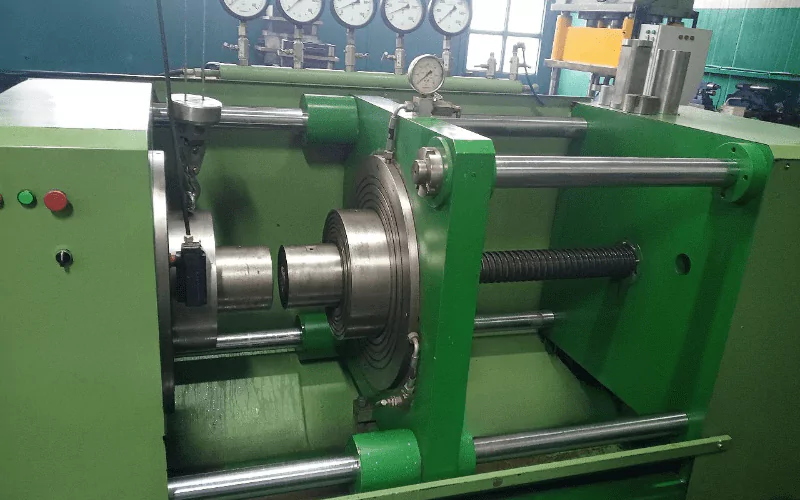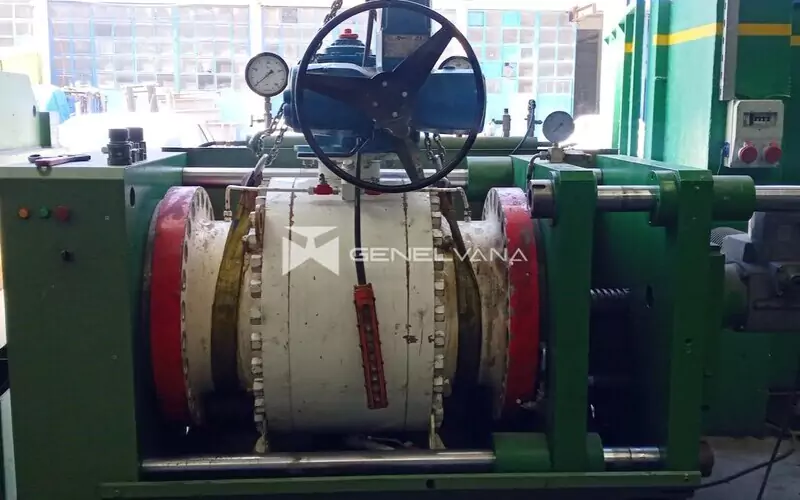We have world-class testing machines, diagnostic equipment and systems that identify all valve operating movements through hydrostatic pressure and leak tests.
To test industrial valves, we have a state-of-the-art testing unit, fully equipped equipment, state-of-the-art diagnostic equipment and associated workshop testing standards and systems, as well as highly defined working procedures in every aspect for testing and renewal, repair, assembly, testing and service. We have experienced valve technicians and support staff who are highly skilled in planning, performing and implementing their tasks.
We have manufactured a Türkak approved, state-of-the-art, state-of-the-art test unit capable of delivering 550 bar water pressure to determine the current condition, durability and leakage of valves. Valve hydrostatic pressure, pressure retention, flow, sealing, all movement tests are carried out by our TÜV certified technicians in accordance with international standards (API 598 / API 579 / API 510 / API 6D). Accordingly, a repair test certificate containing the changed parts list and pressure leakage test values information is issued and a repair warranty is given. Genel Vana's pressure machinery, facilities and diagnostic equipment are accredited and authorized by independent bodies and rating inspectors. We have high knowledge and experience in testing and certifying valves in line with standards. American Petroleum Institute (API) Standard, valve control and test methods are applied in Genel Vana. We make it beautiful and provide reliability.
We stand out with our hard-to-reach resources and exceptional valve repair, testing and certification services.
Valve leaks that occur over time in industrial facilities can cause loss of production, loss of money and time. These leaks may create undesirable situations by reducing the quality of the product produced. In order for the production to be at the desired value and quality, it is important that the valves work perfectly without leaking flow. The main way for valves to operate flawlessly with consistently high performance is to perform regular leakage tests in the field. As VALGEN, outside our headquarters, we can carry out the sealing and operating performance tests of all valve groups and actuator types using water, nitrogen and air, by our certified personnel, with a portable mobile test unit and valve external leak detection measurement devices. In addition, with our on-site testing facility, we can determine the operating accuracy and internal and external leakage conditions of other valve and actuator groups. We can detect the amount of leakage in oil, gas, water, steam, condensate and pressurized product fluids in all pipelines.
Applications that require repair and testing, which VALGEN has provided in the field for years, are carried out risk-free thanks to our experience, safety, accredited approved test unit, diagnostic equipment and certified expert staff. In our study, API 579 procedure is applied and a security circle is created in the field. You can find risk-free, quality service in terms of security and experience only at VALGEN. Do not risk your field safety and production, choose VALGEN like other sectors and avoid risks. All valves coming to VALGEN for maintenance and repair are subjected to API 510 testing before maintenance and are certified and delivered after passing other tests. Exceed industry standards and grow your business with our reliable and effective solutions.
API Standard Valve Control and Test Method
API 598 hydrostatic testing method is the most common method for testing valves using a test fluid (water, nitrogen, air, steam) to observe whether there is a loss of pressure in the valve. It covers test and control conditions at medium pressure for gate valves, ball valves, globe valves, butterfly valves and control valves. There are acceptable leak rates for liquid and gas testing. All valves produced according to various API standards must have leakage and leakage tests performed according to API 598 before being shipped from the manufacturers.
API 510 valve is evaluated with the first check, repair and part replacement test. Defective parts and repair kits that need to be replaced or repaired are identified.
API 579 is the test method applied to see acceptable opening-closing and torque values along with sealing operating conditions under pressure.
API 6D specifically addresses valves produced for oil and natural gas pipelines, PN420 is applied for pressures. A testing machine producing at least 550 bar pressure is required.
ISO 5208 Standard Valve Control and Test Method
The compatibility of various configurations desired for petroleum, petrochemical or similar industrial applications with mechanical parts and electrical parts control in connection with valve standards for specific and challenging applications, and the establishment of basic operating requirements and practices. There are a number of controls and extensive operating procedure requirements that are required to be implemented. The pressure tests and on-off operation tests to be applied must be consistent and meet the acceptance criteria. A similar valve testing requirement of EN 12266 and API 598 (ISO 5208) has been implemented for PN class valves.

